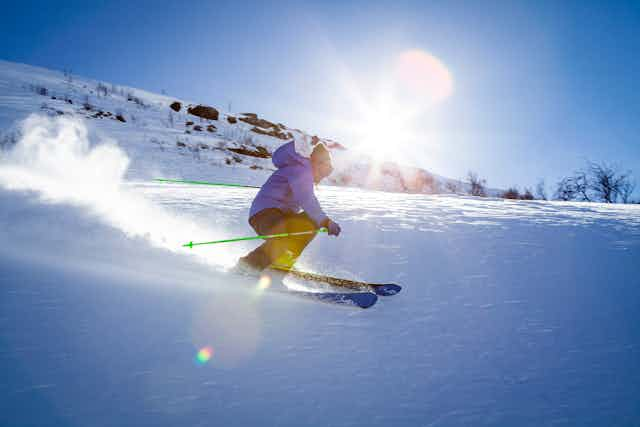From Vail in the US to Val d’Isere in France, winter sports holidays are all the rage. And with more older people now hitting the slopes, there has been an inevitable rise in snow sport-related injuries.
The knee joint is especially vulnerable – accounting for 30% of all skiing injuries. The most common knee injury is to the anterior cruciate ligament – known as the “ACL”. Skiing injury is the third most common cause of an ACL injury in Britain, after football and rugby. Most skiers suffering an ACL injury will require surgery followed by many months of rehabilitation. So the impact of an ACL injury should not be underestimated.
The majority of injuries in the novice skier occur as a result of a fall. In the more experienced skier, it’s most likely to happen when landing from a jump. But the good news is there are steps you can take to condition your body in readiness for your winter sports holiday – which will help to reduce your risk of knee injury.
Here’s our guide to getting ski ready. And although strength and conditioning feature heavily, it’s also important to think about cardiovascular fitness before you hit the slopes – as many injuries occur as a result of fatigue.
Things to do before you go
You should aim to start these exercises before the trip – ideally at least six weeks prior to skiing. All of the below exercises should be attempted for a minute initially with the aim to increase as you improve.
Balance

With any snow sport good balance is essential with particular focus on dynamic balance so the ability to stay upright while on the move. Standing on one leg, reach for the points of an imaginary clock face. Swap legs and do it again.
Lateral jumps

This exercise conditions the body to absorb shock, particularly useful in landing with an emphasis on a lateral direction weight shift. You should bend your knees to lower yourself into a squatting position. Keep your weight evenly distributed through both of your feet. Maintain a straight spine and a flat back. Avoid arching or curving your back and losing form while you jump to the side and then back again.
Parallel rotation jumps

This promotes greater trunk strength and control while keeping the lower limb in a position conducive to parallel turns. Start from a squatting position and jump turn from side to side landing on the balls of your feet. Let your knees bend to absorb the shock and ensure that you keep your chest facing forwards throughout.
Lunges with rotation

This exercise for quadriceps with trunk rotation allows the body to fix in one area while being able to move in another. Starting from standing step straight forwards on one leg letting your knees bend. Once complete twist your upper body to the side and back again before returning to the start position. Repeat on the other leg.
Calf stretches

Flexibility in the calves is important when skiing as it to enables you to lean forward into your boots to keep a downward force on the front of your skis. Lack of flexibility means the ankle’s range of movement is more limited and may lead to excessive weight bearing through the heel – which can lead to a leaning back posture. Leaning backwards is one the main contributors to falls leading to knee ligament injuries.
Cardiovascular
You should also aim to boost your cardiovascular fitness before you hit the slopes, to help your body deal with all the extra activity. You could use a cross trainer, attend a spinning class or even just start running. Interval training would also prepare you for the slopes as skiing involves bursts of activity over a longer duration of time.
Things to do on the trip
Warm up properly every day and wear appropriate clothing to keep you warm. Studies have shown that you are more likely to get injured on colder days. It’s also sensible to try and limit your alcohol intake, as studies have shown alcohol increases risk taking behaviour and reduces coordination increasing the likelihood of injury in skiers. And if you do drink, remember you may still be vulnerable the morning after.

It’s also important to take regular breaks during the day. Take a rest day and make sure you get some sleep. Fatigue is not perceived to be a significant risk factor amongst skiers yet has been linked to increased injury risk.
Helmets are also a must. Head injury is significant risk with any snow sport and is the third most common injury occurring in both skiers and snowboarders – and the consequences can be life changing.
It’s also important to make sure all your gear is fitting properly. Make sure your bindings (which connect your boot to your skis) are set right and regularly checked – and are appropriate for you proficiency level. People with incorrectly bound skis are more likely to incur a knee injury, so this is a point worth remembering.
Yes, you might be on holidays and yes, skiing is fun, but accidents can and do happen quickly – so it’s worth spending a bit of time before you go getting your body ready for all the different movements it will need to make. This will help you to enjoy your time on the slopes, feel less tired and hopefully come home without any injuries.

